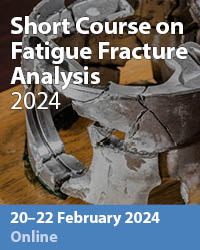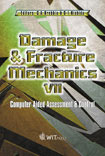Two Level Decomposition Model For Ductile Materials With Damage
Price
Free (open access)
Transaction
Volume
37
Pages
Published
2002
Size
397 kb
Paper DOI
10.2495/DM020341
Copyright
WIT Press
Author(s)
S Dimitrov & E Schnack
Abstract
The process of loading in elastoplastic bodies above the proportionality limit is attributed with an intensive degradation of material stiffness. The objective of this contribution is to present a two-level (mesoscopic-macroscopic) characterization of variational structure and the discrete equations modelling this mechanical phenomenon for elastic plastic coupons with concave regions on the boundary. 1 Introduction The particular account in this contribution is for degradation of material stiff- ness due to volumetric nucleation, coalescence and growth of microcavities under highly localized plastic strain field, i.e for isotropic ductile damage. Following the "classical" ideology in damage modelling (cf. [2, 3, 4]) we develop a stress based framework capable of accommodating isotropic elastic response and linear isotropic plastic response. For the description of isotropic damage we define a scalar damage variable acting multiplicatively on the virgin eigenvalues of the spectrally decomposed elasticity moduli tensor. The spectral decomposition is as- sumed in principal directions of the Cauchy-stress tensor. Basic features of the model are the following: (a) the damage is introduced trough the notion of equivalent stress concept and strain equivalence principle [4]; (b) the self-similarity property is used in utilizing the same hardening model for both, mesoscopic and macroscopic scales; (c) for the given load increment, the quasi-static equilibrium of Representative Volume Eelement (RVE) (for the definition of RVE see [3], pp.27) is described in weak NAVIER form with unilateral constraints on the bulk and share moduli. Damage formulation exhibits an additive structure and can be successfully solved using the product-formula methodology [l]. Latter is realized here in
Keywords





